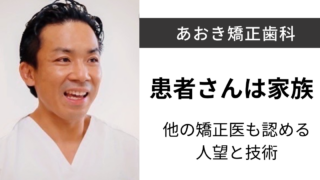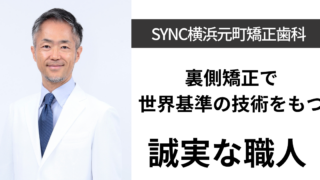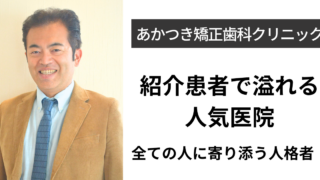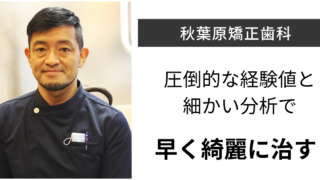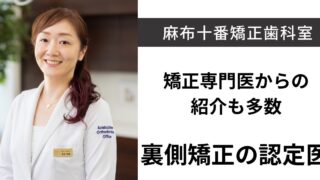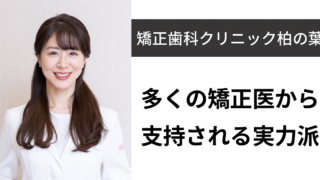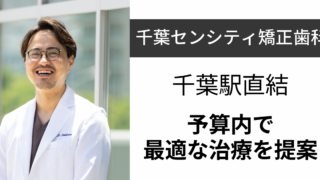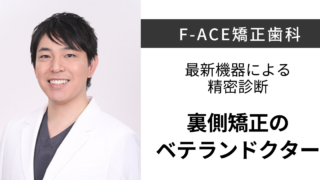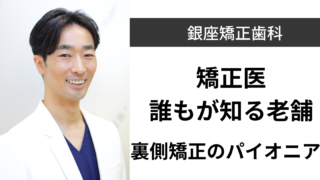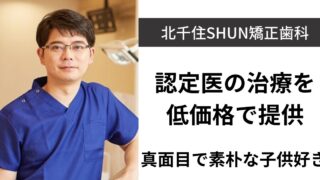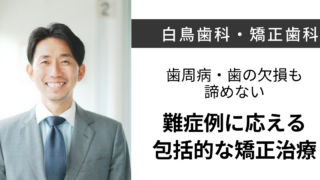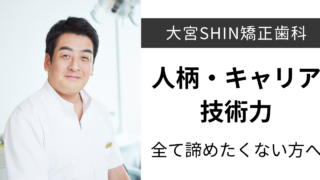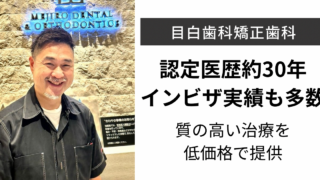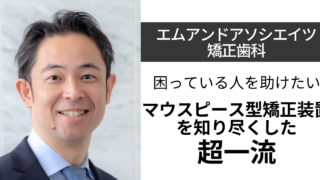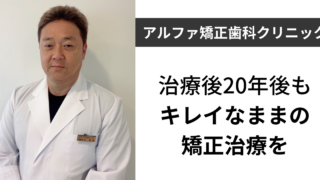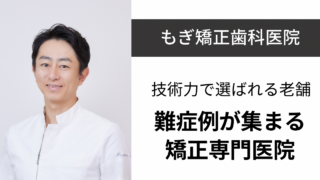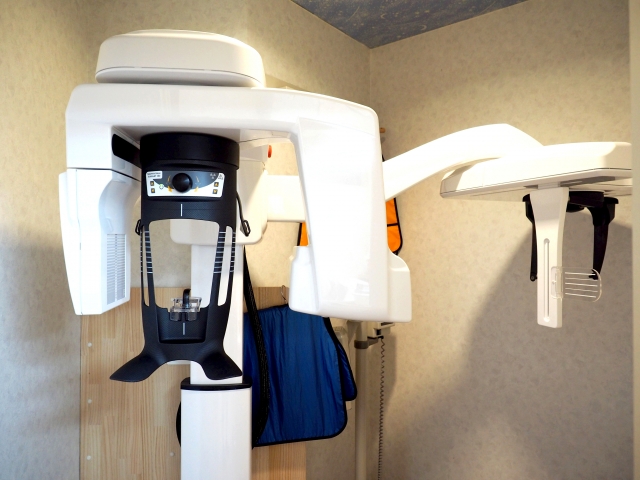
レントゲンの被曝量ってどのくらい?
歯科レントゲンは、歯や骨のような硬い組織の中を観察するために欠かせない検査です。
とはいえ、レントゲンには放射線が使われることから、
「被曝するから身体に良くない」
「妊娠しにくくなる」
といったことを心配する声が多いのも事実です。
しかし、実際のところは、レントゲン検査で健康被害を心配するほどの被曝を受けることはありません。
今回は、歯科レントゲンの被曝量についてお話します。
歯科レントゲンの被曝量はどのくらい?
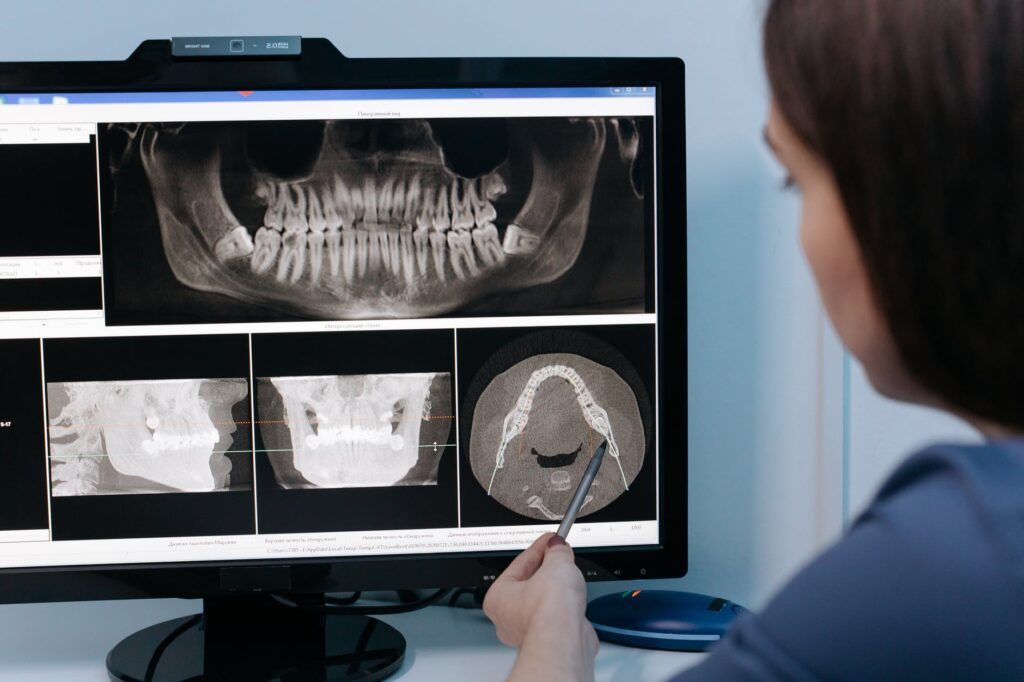
歯科レントゲンでの被曝量は、0.01〜0.1ミリシーベルトです。
【歯科レントゲン種類と1回あたりの被曝量】
■歯科用CT→0.1mSv
■歯科口内法X線写真→0.01mSv
■歯科パノラマX線写真→0.03mSv
■側方頭部X線規格写真(セファログラム)→0.03mSv
※撮影するレントゲンの種類やレントゲンの機械によって若干異なります。
レントゲンの被曝量は「ミリシーベルト(mSv)」という単位で表され、数字が小さいほど被曝量も少ないです。
身体に健康被害を引き起こす可能性のある被曝量は、1回あたり200ミリシーベルト以上(※)です。
そのため、歯科レントゲンでの被曝量は非常に少なく、健康被害の心配はありません。
※妊婦や被曝する身体の部位によって数値は異なります。
歯科レントゲンの被曝量が少なくて安全性が高い理由
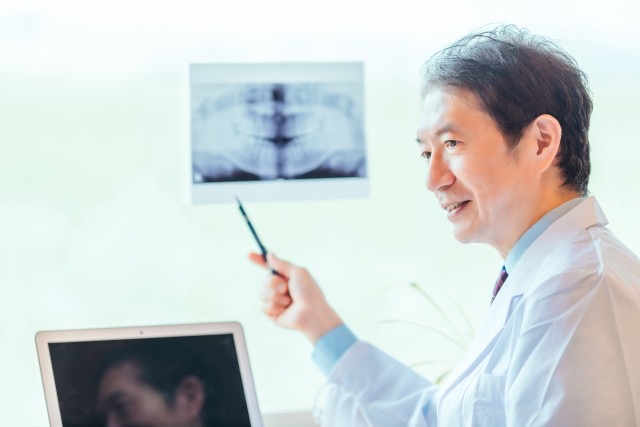
歯科レントゲンの被曝量が少なくて安全性が高い理由は、以下の3つです。
- 日常生活で受ける被曝量よりも歯科レントゲンの被曝量は圧倒的に少ない
- 被曝の原因となる放射線は身体に残らない
- 防護エプロンをつけるので必要以上の被曝が起こらない
日常生活で受ける被曝量よりも歯科レントゲンの被曝量は圧倒的に少ない
私たちは水や食物、紫外線などから日常的に被曝しており、その量は日本に住んでいる人で年間平均1.5ミリシーベルトです。
歯科レントゲンの被曝量は1回あたり0.01〜0.1ミリシーベルトなので、日常生活で1年間で受ける被曝量よりも圧倒的に少なく、安全性がかなり高いです。
被曝の元になるのは「放射線」という電磁波の一種です。放射線を浴びることを「被曝」といいます。
放射線には歯科レントゲンのように人工的に作られた「人工放射線」と自然界に存在する「自然放射線」があります。
自然放射線も人工放射線も一度に200ミリシーベルト以上被曝すると、健康被害の危険があることは変わりません。
自然放射線には、
- 太陽の紫外線
- 土壌に含まれるカリウム40、ウラン238、トリウム232
- 水に含まれるヨウ素
- 肉・野菜・穀物に含まれるセシウム、カリウム40 など
があります。
いずれも日常生活のなかで避けることはできず、基本的に私たちは毎日被曝していることになります。
しかし、日常的に歯科レントゲンよりも多く被曝しているにも関わらず、私たちが健康被害を受けることはほとんどありません。
このことから、歯科レントゲンの安全性は非常に高いといえます。
被曝の原因となる放射線は身体に残らない
放射線は身体を通り抜ける性質があります。
そのため、歯科用レントゲンを撮影しても、放射線が身体に残って害を及ぼし続けることはありません。
防護エプロンをつけるので必要以上の被曝が起こらない
歯科レントゲンを撮影する際は、撮影箇所以外への被曝を最小限にするために防護エプロンを着用します。
防護エプロンは放射線を通さない鉛でできているため、撮影箇所以外に放射線が当たるのを防いでくれます。
そのため、歯科用レントゲンの被曝量は限りなく0に近く、安全性が高いです。
歯科レントゲンの被曝量と妊娠・妊婦への影響
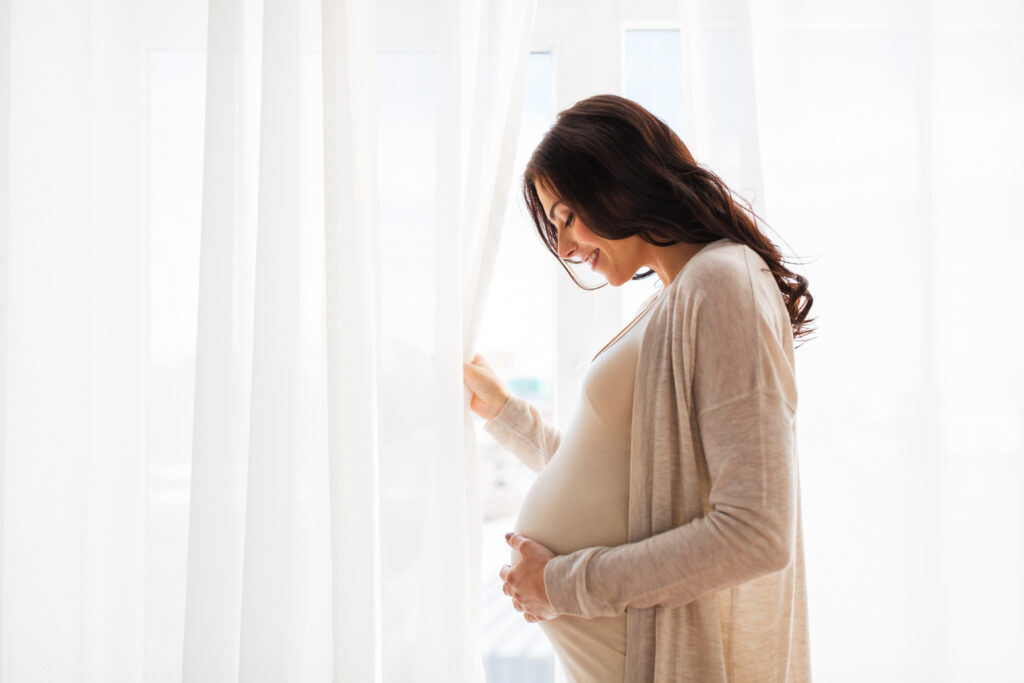
歯科レントゲンでの被曝で最も心配されることのひとつは、妊娠・妊婦の被曝による赤ちゃんへの影響です。
- 女性の被曝による妊娠への影響
- 男性の被曝による妊娠への影響
- 妊婦の被曝による赤ちゃんへの影響
の3つについて歯科レントゲンの被曝量とともに解説します。
女性の被曝による妊娠への影響
女性が永久的に不妊になるとされる被曝量は、1回あたり2500〜6000ミリシーベルトです。
また、長年にわたって毎年2000ミリシーベルトずつ被曝した場合も、永久的に不妊になるといわれています。
歯科レントゲンの被曝量は最大でも0.1ミリシーベルトですので、基本的に永久的に不妊になる心配はありません。
男性の被曝による妊娠への影響
男性の場合は、一時的な不妊と永久的な不妊になる被曝量が異なります。
一時的な不妊の場合は、
- 1回あたり→150ミリシーベルト
- 長年にわたる被曝→年間400ミリシーベルト
永久的な不妊の場合は、
- 1回あたり→3500〜6000ミリシーベルト
- 長年にわたる被曝→年間2000ミリシーベルト
の被曝が起こると、男性不妊になるといわれています。
歯科レントゲンの被曝量は最大でも0.1ミリシーベルトですので、基本的に一時的、もしくは永久的に不妊になる心配はありません。
妊婦の被曝による赤ちゃんへの影響
妊婦の被曝による赤ちゃんへの影響は、妊娠の時期によって異なります。
腹部に直接、以下の数値以上の被曝が起こると、時期によって赤ちゃんの流産、奇形、発達障害が起こる可能性があるといわれています。
- 赤ちゃんの流産
- 受精〜9日に1回あたり100ミリシーベルト以上
- 赤ちゃんの奇形
- 妊娠3〜8週に1回あたり100ミリシーベルト以上
- 赤ちゃんの発達障害
- 妊娠8〜15週に1回あたり300ミリシーベルト以上
歯科レントゲンの被曝量は最大でも0.1ミリシーベルトですので、基本的にこのようなことが起こる心配はありません。
しかし、万が一を考えて、緊急時以外は妊婦や妊娠の可能性がある女性の歯科レントゲン撮影は行わないことが多いです。
妊娠の可能性がある、または妊娠が分かっている場合は、撮影の前にしっかりと伝えるようにしましょう。
歯科レントゲンの被曝量は非常に少ない
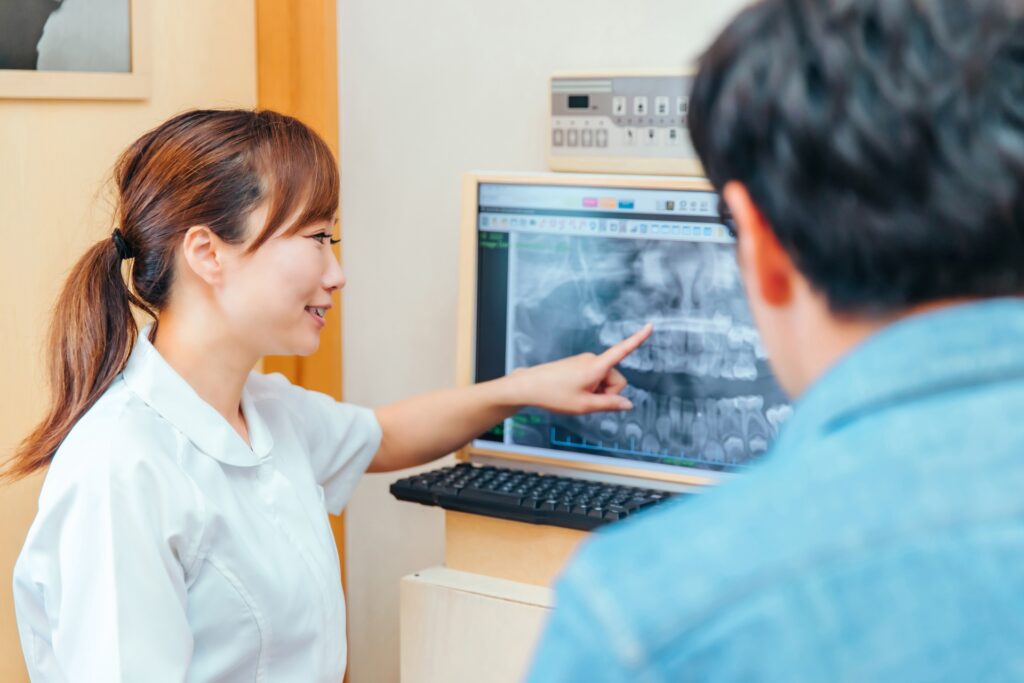
歯科レントゲンの被曝量は、私たちが日常生活で被曝している量よりも圧倒的に少ないです。
また、歯科レントゲンの撮影の際には、放射線をブロックする鉛のエプロンを着用します。鉛のエプロンを着用すれば、実際の被曝量もさらに少なくなります。
歯科レントゲンは、歯の状態や歯茎の中の問題を発見するために必要な検査です。
必要以上に撮影することは望ましくありませんが、同時に必要以上に心配することもありません。
365dentistでは、
- 歯科医師運営のオープンチャットでのお悩み相談
- あなたに合った歯科医院探しのお手伝い
をしています!お口をより健康的に美しくしたい方は、ぜひ遊びに来てくださいね!
関連記事:妊娠と矯正治療について
関連記事:矯正治療は診断が9割
365dentist総監修 歯科医師/勝屋友紀子
長崎大学歯学部卒業、〜2018 九州医療センター、2018〜現在 都内歯科クリニック勤務
監修 歯科医師/Naomi
臨床研修終後、都内審美歯科勤務。現在は歯科医師/歯科ライター


